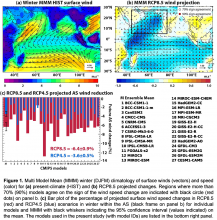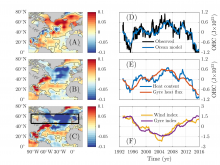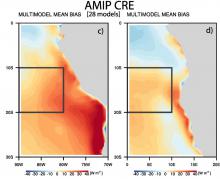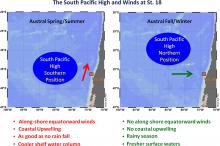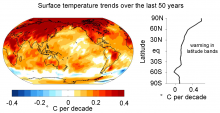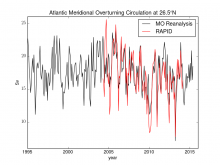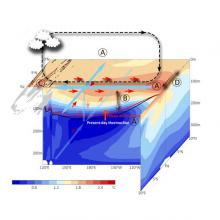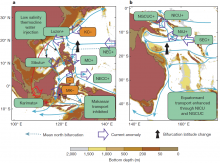Science Highlights
Projected response of the Indian Winter Monsoon Winds over the Arabian Sea to Climate Change
Submitted by Jing Li on Thu, 2017-10-12 11:19A recent study indicates a robust reduction of the Indian Winter Monsoon wind intensity over the Arabian Sea by the end of the 21st century in all the 27 analysed CMIP5 models (a reduction of 6.5% for Representative Concentration Pathways (RCP) 8.5 and 3.5% for RCP4.5, on an average), which is not yet detectable in observations.
What is responsible for recent decadal changes in the subpolar North Atlantic Ocean’s heat content?
Submitted by Nico on Mon, 2017-09-04 08:30Can the SST biases in coupled climate model simulations of the eastern tropical Atlantic and Pacific oceans be reduced?
Submitted by Jing Li on Tue, 2017-02-14 04:04Extended deadline to submit abstract for the Climate Prediction Applications Science Workhop 2017
Submitted by admin on Fri, 2017-01-20 04:28Call for Abstracts
Cooler and saltier waters in the upwelling region off central-south Chile
Submitted by Jing Li on Thu, 2017-01-05 01:56Southern Ocean warming delayed by circumpolar upwelling and equatorward transport
Submitted by Lei Han on Mon, 2016-06-20 09:25Recent slowing of Atlantic overturning circulation as a recovery from earlier strengthening
Submitted by Lei Han on Sun, 2016-06-12 04:44ENSO and greenhouse warming
Submitted by Lei Han on Wed, 2016-05-25 08:47Pacific western boundary currents and their roles in climate
Submitted by Lei Han on Tue, 2016-05-24 11:59The influence on ENSO's life cycle via equatorward WBC transport, the longevity of SST anomalies and strong advection transport of warm water by the Kuroshio Current, the considerable impact on Asian Monsoon via anomalous heat content exerted by the North Pacific WBCs, all have substantial climate impacts locally and globally.






